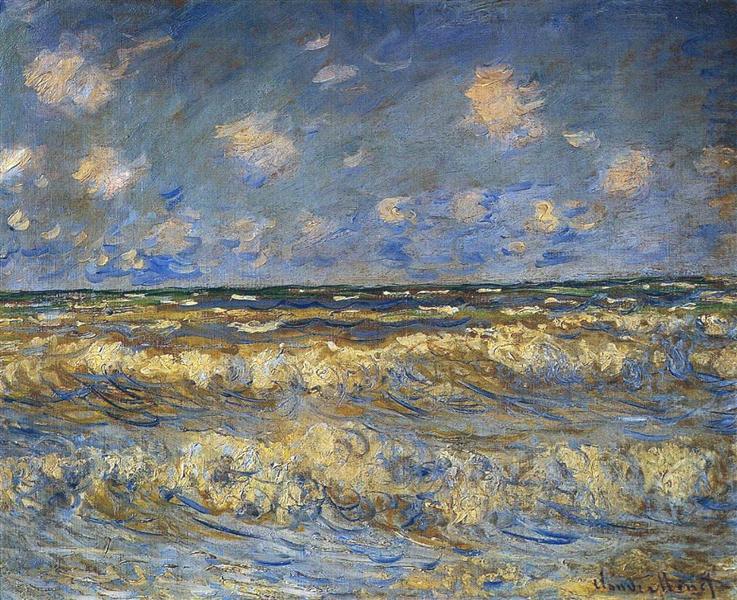Описание
Claude Monet's painting "Rough Sea," created in 1881, is a vibrant testament to the artist's mastery in capturing light and the movement of nature. Noted for its swift execution and focus on atmospheric effects, this work offers a window into the world of Impressionism that Monet helped define. The composition focuses on a vast expanse of water, where soft waves churn with an almost tangible force. The way Monet uses color and shape to convey the fury of the sea is striking, as hues of blue, green, and white combine in a back-and-forth motion that symbolizes the ocean's vitality and unpredictability.
In the foreground, the waves are in a cycle of rising and falling, in an almost choreographic movement that seems to extend beyond the canvas. Monet employs loose, impasto brushstrokes, which elicits a sense of dynamism, making the viewer feel as though they are standing before a constantly changing scene. This notion of movement is a distinctive feature of Impressionism, where the artist seeks to capture not only the image, but also the sensory experience of the moment. The way the light plays on the surface of the water, reflecting sunlight and creating brilliant sparkles, is one aspect that highlights Monet's mastery of light manipulation.
In the absence of human figures or architectural elements to distract the viewer, Rough Sea becomes a purely natural study. In this sense, Monet makes his work more than a landscape; it is an exploration of the power of nature in its rawest form. The absence of characters also allows for a deep emotional connection with the scene, where the viewer can place themselves in the vastness of the ocean, feeling its grandeur and, perhaps, its danger.
Interestingly, this painting was created during a period when Monet was seeking to capture the essence of nature in various contexts. His output in the 1880s was marked by maritime themes, such as those found in similar works such as The Beach at Trouville and his series of seascapes. This preference confirms not only the artist's interest in the aquatic environment, but also his constant search for new perspectives and aesthetic experiences. Rough Sea can be seen as a prime example of his commitment to plein air, the technique that involved painting outdoors, allowing Monet to observe first-hand the changes in light and atmosphere.
Through Rough Sea, Monet not only displays his technical skill, but also invites the viewer into a deeper contemplation of nature. The work manifests itself as a dialogue between the viewer and the sea, a reminder of the strength and beauty that resides in natural spaces. Thus, the painting transcends mere representation, becoming a symbol of the connection between man and the environment, a theme that resonates throughout the Impressionist movement and in Monet's work in particular. Ultimately, Rough Sea remains a powerful testament to Monet's legacy, a shining example of how art can reflect the immediacy of human experience in the face of the magnificence of the natural world.
KUADROS ©, a famous painting on your wall.
Hand-made oil painting reproductions, with the quality of professional artists and the distinctive seal of KUADROS ©.
Painting reproduction service with satisfaction guarantee. If you are not completely satisfied with the replica of your painting, we will refund 100% of your money.

